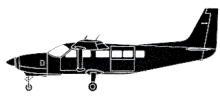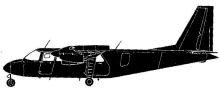Incident Overview

Description
The Twin Otter plane was on a 10-minute inter island flight between St. Maarten and Saint-Barthlmy and approached Saint-Barthlmy from the West for a visual approach and landing on runway 10. While on finals over the ‘Col de la Tourmente’, the aircraft was seen making a sharp turn to the left. The Twin Otter struck a house on the ‘Col de la Tourmente’ and caught fire. A man on the ground was also killed and his wife was injured. While on finals the captain probably selected “beta reverse range” on the propellers in order to slow down. Upon vigorously pushing back the power levers to their normal position, an asymmetric power condition developed. The Twin Otter rolled to the left and crashed. Saint-Barthlmy is known for the difficult approach to the airport and pilots flying into Saint-Barthlmy need to have a special certification. After overflying ‘Col de la Tourmente’ a quick steep descent has to be made to land at runway 10, a 2100 feet runway which ends up in sea. The aircraft overfly the ‘Col de la Tourmente’ at a height of 10 m or less. PROBABLE CAUSES: “The accident appears to result from the Captain’s use of the propellers in the reverse beta range, to improve control of his track on short final. A strong thrust asymmetry at the moment when coming out of the reverse beta range would have caused the loss of yaw control, then roll control of the aircraft. The investigation could not exclude three other hypotheses which can nevertheless be classified as quite unlikely: – A loss of control during a go-around. – A loss of control due to a stall. – A loss of control due to sudden incapacitation of one of the pilots. The Captain’s lack of recent experience on this airplane type, the undeniable difficulty of conducting an approach to runway 10 at Saint-Barthlemy and the pressure of time during this flight were contributory factors. The low height at which the loss of control occurred was an aggravating factor.”
Source of Information
http://www.skybrary.aero/index.php/DHC6,_vicinity_Saint_Barthelemy_French_Antilles,_2001_(LOC_FIRE_HF)http://www.skybrary.aero/index.php/DHC6,_vicinity_Saint_Barthelemy_French_Antilles,_2001_(LOC_FIRE_HF)Primary Cause
The Captain?s use of the propellers in the reverse beta range to improve control on a short final approach, combined with a strong thrust asymmetry during the transition, likely caused the loss of control and subsequent roll.The Captain?s use of the propellers in the reverse beta range to improve control on a short final approach, combined with a strong thrust asymmetry during the transition, likely caused the loss of control and subsequent roll.Share on:



